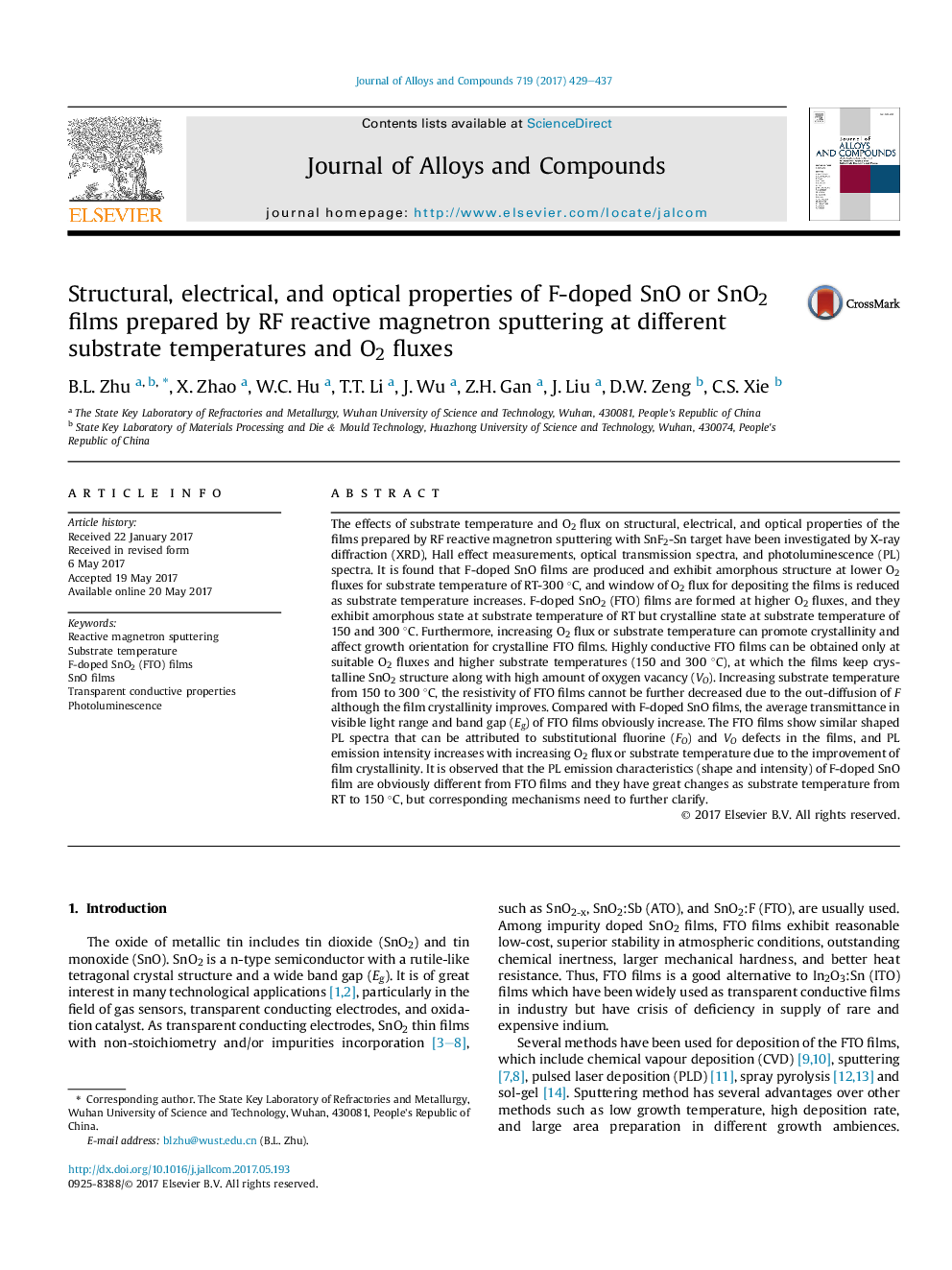| کد مقاله | کد نشریه | سال انتشار | مقاله انگلیسی | نسخه تمام متن |
|---|---|---|---|---|
| 5458967 | 1516175 | 2017 | 9 صفحه PDF | دانلود رایگان |
عنوان انگلیسی مقاله ISI
Structural, electrical, and optical properties of F-doped SnO or SnO2 films prepared by RF reactive magnetron sputtering at different substrate temperatures and O2 fluxes
دانلود مقاله + سفارش ترجمه
دانلود مقاله ISI انگلیسی
رایگان برای ایرانیان
کلمات کلیدی
موضوعات مرتبط
مهندسی و علوم پایه
مهندسی مواد
فلزات و آلیاژها
پیش نمایش صفحه اول مقاله

چکیده انگلیسی
The effects of substrate temperature and O2 flux on structural, electrical, and optical properties of the films prepared by RF reactive magnetron sputtering with SnF2-Sn target have been investigated by X-ray diffraction (XRD), Hall effect measurements, optical transmission spectra, and photoluminescence (PL) spectra. It is found that F-doped SnO films are produced and exhibit amorphous structure at lower O2 fluxes for substrate temperature of RT-300 °C, and window of O2 flux for depositing the films is reduced as substrate temperature increases. F-doped SnO2 (FTO) films are formed at higher O2 fluxes, and they exhibit amorphous state at substrate temperature of RT but crystalline state at substrate temperature of 150 and 300 °C. Furthermore, increasing O2 flux or substrate temperature can promote crystallinity and affect growth orientation for crystalline FTO films. Highly conductive FTO films can be obtained only at suitable O2 fluxes and higher substrate temperatures (150 and 300 °C), at which the films keep crystalline SnO2 structure along with high amount of oxygen vacancy (VO). Increasing substrate temperature from 150 to 300 °C, the resistivity of FTO films cannot be further decreased due to the out-diffusion of F although the film crystallinity improves. Compared with F-doped SnO films, the average transmittance in visible light range and band gap (Eg) of FTO films obviously increase. The FTO films show similar shaped PL spectra that can be attributed to substitutional fluorine (FO) and VO defects in the films, and PL emission intensity increases with increasing O2 flux or substrate temperature due to the improvement of film crystallinity. It is observed that the PL emission characteristics (shape and intensity) of F-doped SnO film are obviously different from FTO films and they have great changes as substrate temperature from RT to 150 °C, but corresponding mechanisms need to further clarify.
ناشر
Database: Elsevier - ScienceDirect (ساینس دایرکت)
Journal: Journal of Alloys and Compounds - Volume 719, 30 September 2017, Pages 429-437
Journal: Journal of Alloys and Compounds - Volume 719, 30 September 2017, Pages 429-437
نویسندگان
B.L. Zhu, X. Zhao, W.C. Hu, T.T. Li, J. Wu, Z.H. Gan, J. Liu, D.W. Zeng, C.S. Xie,